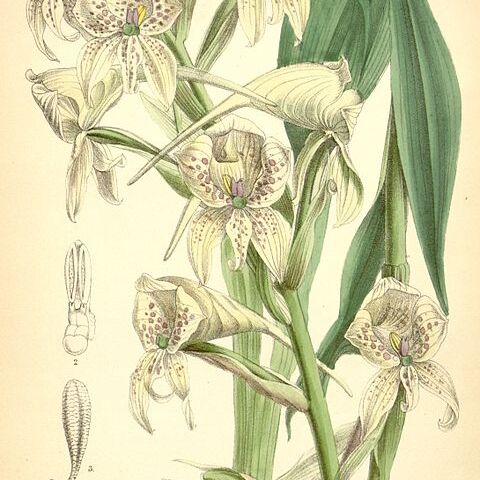Terrestrial herb, robust, geophyte, 0.40-1.15 m high; root tubers present. Sterile shoots: rarely produced, basal sheaths at least 1, leaves 3 or 4, erect, narrowly lanceolate, petiolate. Fertile shoots: cauline leaves imbricate, all largely reduced to sheathing leaves, basal sheaths not clearly differentiated, grading into floral bracts. Inflorescence a dense, cylindrical raceme; flowers 5-25, resupinate, white to cream-coloured with purple or pink mottling; sweet scented. Sepals 20-40 mm long, rounded to acuminate, median sepal broadly galeate, lateral sepals spreading horizontally, lanceolate to ovate-oblong, reflexed at anthesis, apex with a 2 mm long apiculum; spur cylindrical, ascending, curved, 30-40 mm long, apex somewhat inflated. Petals obliquely narrowly ovate. Lip horizontal basally, soon decurved, narrowly to broadly elliptic, 20-25 x 4-15 mm. Flowering time Nov.-Mar.

